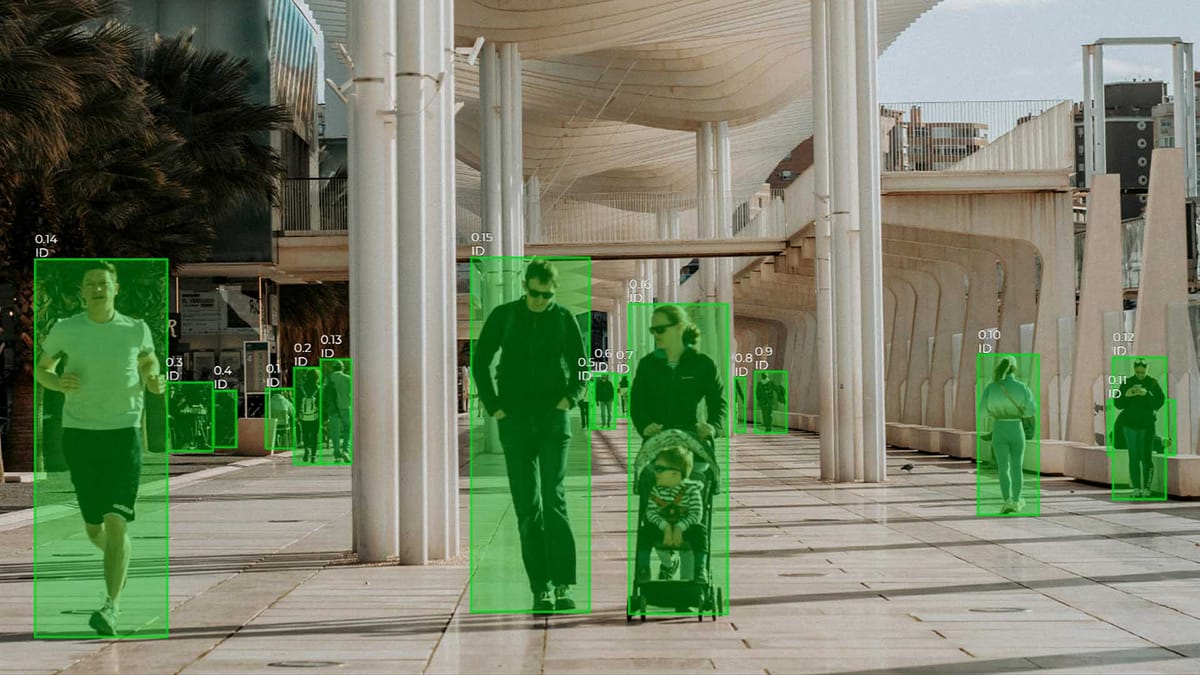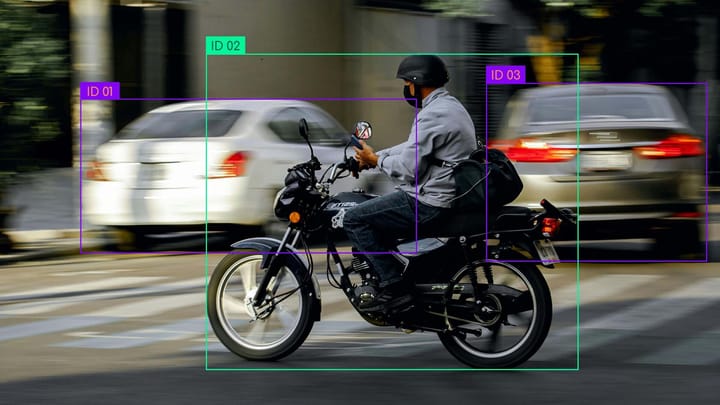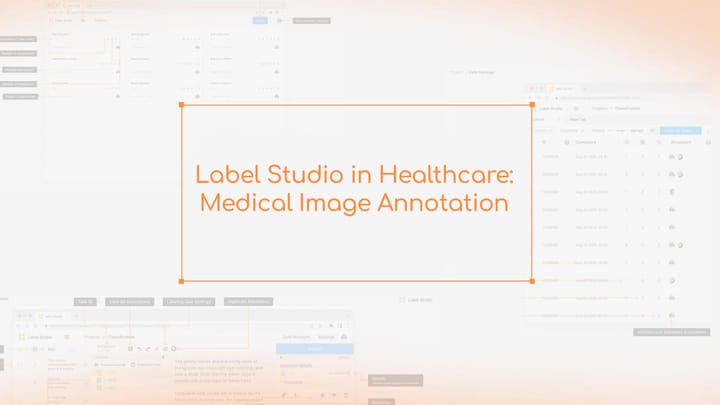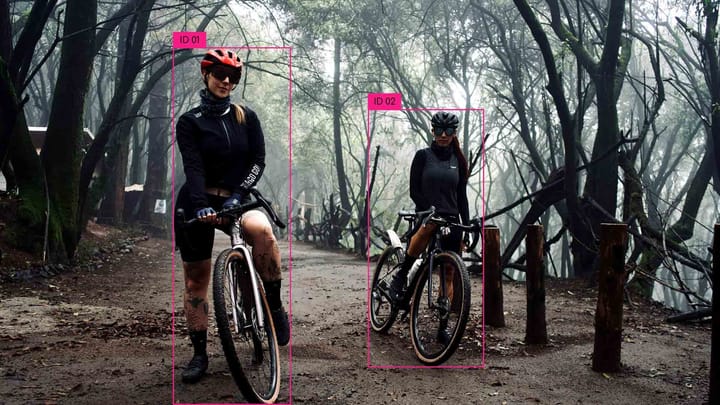Running YOLOv8 on Cloud Platforms: Advantages and How-To

YOLOv8 is a robust algorithm for visual tasks, marking a great performance across multiple metrics. Cloud-based YOLOv8 uses are surging, making previously onerous computational costs manageable. Thanks to the vast, scalable resources of cloud computing, users gain immediate access to top-tier AI tools. This not only benefits industries like agriculture, security, and healthcare but highlights a shift towards AI democratization. Now, cutting-edge technology is accessible to innovators everywhere, thanks to the efficient YOLOv8 deployment on the cloud.
Key Takeaways
- Discover the transformative improvements brought by YOLOv8-PG, setting a new benchmark for object detection accuracy and computational efficiency.
- Understand how the seamless integration of YOLOv8 on cloud platforms magnifies its accessibility and scalability, making it an indispensable tool for developers.
- Uncover the cost-effectiveness of adopting cloud-based YOLOv8, which circumvents the prohibitive expenses associated with local deployments.
- Gain insights into the diverse applications of YOLOv8, ranging from egg defect detection to autonomous vehicles, showcasing its versatility and impact.
- Realize the power of collaboration among cloud service providers and AI models, unlocking the potential for innovation and growth in multiple industries.
The Evolution of Object Detection and Introduction to YOLOv8
The journey of object detection has been monumental, shifting from basic methods to today's advanced YOLO series. This evolution has paved the way for new possibilities in image analysis. Innovations such as YOLOv8 and its seamless cloud integration have emerged.
From Viola-Jones to YOLO Series
The Viola-Jones algorithm was once a major advancement, making it easier to detect objects efficiently. But as the need for greater speed and precision grew, the foundation was laid for something more advanced. That's where the YOLO series steps in. These models have transformed object detection with their quick and accurate results. With YOLOv8, these advancements have reached new heights, enhancing performance and user experience.
The YOLO-NAS model has outperformed its predecessors, achieving a significant 20.5% jump in performance from YOLOv7. It also shows an 11% improvement over YOLOv5 and a 1.75% edge over YOLOv8 itself. With a mean average precision (MAP) of 47 and only 2.36 milliseconds latency, YOLO-NAS leads the pack. It ushers in a new era of unrivaled speed and precision in object detection.
YOLOv8: Building on the Success of YOLOv5
YOLOv5 was beloved for its simplicity, becoming a popular solution for object detection tasks. YOLOv8 builds on this by enhancing the model's structure, making it faster and more precise. This model excels in object detection, image segmentation, and classification. Against YOLOv5, YOLOv8 proves more accurate 64% of the time, showcasing the series' dedication to progress.
The NVIDIA RTX A6000 GPU enhances YOLO-NAS's capabilities with its 336 Tensor Cores and 768 GB/s memory bandwidth. It also features a modern PCI Express 4.0 x16 interface. This hardware is essential for meeting the real-time processing needs of object detection in practical applications.
Continuous Development and Open Source Accessibility
YOLOv8's open-source nature encourages ongoing development. The community's involvement has led to innovations like the YOLO-NAS Pose Estimation by Deci. This highlights the YOLO series' dominance in state-of-the-art pose estimation. YOLOv8's adaptability is evident in its varying sizes, all fine-tuned to balance speed and accuracy efficiently.
Its foundation includes thorough pre-training on diverse datasets such as COCO, Objects365, and Roboflow 100. This pre-training outfits YOLO-NAS with the ability to handle different object detection scenarios. It ensures precision, demonstrating the YOLO series' commitment to excellence.
With YOLOv8's cloud integration, the possibilities for both developers and end-users are expansive. This model's cloud compatibility and open-source access could lower artificial intelligence entry barriers. It aims to make deep learning technologies accessible to everyone.
YOLOv8 on cloud platform: Combining Cutting-Edge Technology with Scalable Infrastructure
The integration of YOLOv8 with cloud platforms combines advanced AI with extensive cloud capabilities. This blend enhances YOLOv8 cloud performance and ensures efficiency, scalability, and responsiveness. It meets the needs of various applications effectively. Let's explore the benefits of cloud integration for YOLOv8.
Benefiting from the Cloud's Computational Power
Cloud platforms offer significant processing and storage. They support developers and teams in running YOLOv8 models at scale, managing heavy computational tasks effortlessly. The cloud's elasticity provides resources on-demand, allowing projects to scale smoothly as needed.
Seamless Cloud Integration and Automation
Deploying YOLOv8 on the cloud is made easy with cloud integration. This streamlines workflow automation and service connectivity. Such integration facilitates continuous delivery, real-time data handling, and coordination between development and production. Automation reduces repetitive tasks, boosting efficiency and reliability.
Optimizing YOLOv8 Performance with Cloud Services
Optimization is key to enhancing model efficiency, including YOLOv8 cloud performance. Cloud services offer tools for tuning performance, like auto-scaling and advanced monitoring. These features help adjust your YOLOv8 deployment for optimal speed, accuracy, and cost management.
| Feature | WDM Optical Path Structure | Traditional Coupler-Based Structure |
|---|---|---|
| SNR (1 kHz) | 75.5 dB | 65.1 dB |
| Sensitivity (1 kHz) | 1104.9 mV/Pa | 891.75 mV/Pa |
| Linear Fitting Coefficient | 0.9946 | 0.9905 |
Recent data from the Sensors journal highlight advancements in sensor technology, like improved optical path structures in EFPI fiber optic acoustic sensors. These advances highlight the potential benefits for YOLOv8 in the cloud. Integrating YOLOv8 with cloud computing leverages cutting-edge sensor technology, emphasizing the importance of sophisticated algorithms in versatile computational platforms.
Step-by-Step Guide: Deploying YOLOv8 on the Cloud
Deploying YOLOv8 on the cloud taps into advanced object detection in a flexible, scalable way. The process of YOLOv8 cloud implementation covers detailed model training to efficient model serving. The first step involves exporting the YOLOv8 model to TorchScript for better optimization and serialization.
During setup, using PythonServer components is crucial for building strong model servers. These servers host YOLOv8 models. They include a custom class from PythonServer, with setup and predict methods. The setup method prepares the model, while the predict method handles prediction tasks.
To deploy YOLOv8 on the cloud, the command line could be:
lightning run app app.py --cloud
This command uses Lightning AI for moving your app to the cloud, accessing powerful computing resources. By adding AutoScaling, this enhances YOLOv8 cloud optimization. It adjusts resources as needed, blending cost efficiency with consistent performance.
NASA's Earth Information Center shares over fifty years of data, covering Earth's land, water, air, and climate. The agency's Artemis IV mission aims to build Gateway for space exploration. This advances technology similarly to how YOLOv8 models improve in cloud settings.
Asian-American and Native Hawaiian Pacific Islander Heritage Month honors exploration and heritage through 124 images. This underlines the significance of imagery in showcasing human achievements. Just as this technology assists in Moon to Mars missions, it helps optimize YOLOv8's effectiveness in the cloud.
When starting with deploying YOLOv8 on the cloud, it's more than just a tech project. It's a move towards continuing a legacy of innovation and exploration. This mirrors NASA's vast projects, aiming beyond our Earth.
Comparing YOLOv8 Cloud Hosting Options
The surge in machine learning and computer vision has made the selection of YOLOv8 cloud hosting pivotal for both developers and businesses. Understanding the various cloud service options available is essential for effective YOLOv8 model deployment. These options influence deployment decisions for YOLOv8.
Understanding Different Cloud Service Models
The primary cloud service models—IaaS, PaaS, and SaaS—offer different management levels and flexibility. IaaS provides extensive control with its virtual infrastructure. PaaS offers a combined hardware and software platform for application development and deployment. SaaS, accessible via the web, requires minimal user management. These models affect the agility and scalability of YOLOv8 deployments.
Choosing the Right Cloud Provider for YOLOv8 Deployment
Choosing a compatible cloud hosting provider for YOLOv8 is critical. A study comparing Microsoft Azure and AWS emphasized AWS's wide range of services, ideal for extensive machine learning resources and hosting options. AWS SageMaker supports varied deployments with its different CPU and GPU instances. For cost-effective training, Genesis Cloud and ClearML present an affordable yet advanced solution for MLOps teams.
Cloud-Based vs Local Deployment: A Cost-Benefit Analysis
Choosing between cloud-based and local deployments requires a detailed cost-benefit comparison. Cloud hosting excels in performance, scalability, and uptime. Yet, operational expenses, computational resource density, and geographic availability can sway this choice. Different deployment techniques, such as Blue Green and Rolling deployments, benefit cloud infrastructures differently. Below is a comparison of key financial and performance aspects for YOLOv8 hosting:
| Hosting Option | Cost per Epoch | Service-Level Agreement | Flexibility | Resource Availability |
|---|---|---|---|---|
| AWS | Higher | Extensive | High | Global |
| Microsoft Azure | Variable | Comprehensive | Moderate | Global with some limitations |
| Genesis Cloud + ClearML | Most cost-efficient | Customizable | High | Focus on MLOps teams |
In conclusion, selecting YOLOv8 cloud hosting must be driven by project-specific constraints and needs. From AWS's optimization features to Genesis Cloud's affordability, each provider offers unique advantages. Consider cloud service models and apply both quantitative and qualitative insights for successful YOLOv8 deployment that aligns with your budget and operational requirements.
Best Practices for YOLOv8 Cloud Implementation
When exploring YOLOv8 cloud deployment, understanding best practices is crucial. It makes the difference between basic and optimized deployments. To improve your YOLOv8 model training and deployment, consider these tips:
- Ensure that the model configuration and training weights are saved together. This helps in moving smoothly from training to inference stages.
- Use the default augmentations and hyperparameters for consistency. This is key when the deployment conditions are not well known.
- Embrace streaming mode for continuous inference on long videos or data streams. It ensures the model works well in real-time situations.
Following these YOLOv8 best practices will streamline your operations. They significantly enhance deployment success and model accuracy.
Adhering closely to prescribed best practices will significantly improve your model's performance and the user experience during YOLOv8 cloud deployment.
Besides these practices, analyzing performance data of different optimization frameworks is crucial. It informs the deployment of your YOLOv8 model:
| Framework | Performance Notes | Optimized Hardware |
|---|---|---|
| TorchScript | Enhances performance over PyTorch, especially in production | Generic |
| OpenVINO | Significant performance boost on Intel CPUs, GPUs, VPUs | Intel Hardware |
| TensorRT | Top-tier performance on NVIDIA GPUs, high-speed inference | NVIDIA GPUs |
| CoreML | Optimized for on-device performance with minimal battery use | Apple Hardware |
| TF SavedModel | Scalable performance in server environments | Servers with TensorFlow Serving |
This data highlights the best scenarios for a YOLOv8 model to perform. Each cloud deployment is unique. Therefore, adapt these frameworks to meet your specific needs.
Maximizing YOLOv8 Cloud Performance With AutoScaling and Quantization
Deploying YOLOv8 models on cloud platforms opens doors for enhancing performance and cost-effectiveness. Through YOLOv8 AutoScaling and YOLOv8 quantization, your object detection apps stay efficient under variable demand.
Leveraging AutoScaling for Dynamic Workload Management
YOLOv8 AutoScaling adjusts computational resources dynamically, aligning with your object detection needs. It's proven in Sensors journal that AutoScaling boosts efficiency across many machine types. From E2 to G2 series, it's effective.
N1 machines, especially with NVIDIA A100 GPUs, strike a cost-performance balance. This optimization begins with choosing machines with the right vCPUs and memory.
Consider C2 and C2D series for their stellar performance and reasonable cost, standing against pricier alternatives.
Implementing 8-Bit and 4-Bit Quantization Techniques
Quantization is key for optimizing YOLOv8 deployment, minimizing the model’s size and boosting inference speed. With 8-bit and 4-bit techniques, latency drops without losing much accuracy. Sensors volume 24 highlights how quantization substantially improves YOLOv8, enabling fast and precise processing.
Monitoring and Optimizing for Efficient Cloud Utilization
Effective cloud resource use requires ongoing monitoring and optimization. Choices regarding GPU accelerators and constraints on AutoML models are critical. According to journals, selecting the right machine types is crucial for optimizing YOLOv8 cloud performance.
Summing up, using insights on GPU availability and merging YOLOv8 AutoScaling with advanced quantization techniques ensures superior YOLOv8 cloud performance. It's about running models efficiently in the real world, not just running them.
Exploring the Challenges: A Real-World Deployment Story
The deployment of YOLOv8 involves significant challenges, including technical and practical issues. The CODECO project, backed by the European Union and involving partners like Siemens and Telefónica, highlights these challenges. It aims to expand object detection technologies across computing platforms. Through the CODECO initiative, we understand the complexities of deploying YOLOv8 in real-world situations. This exploration offers valuable insights for both the industry and academic circles.
Within the CODECO consortium, the University of Göttingen focuses on a smart city project that showcases YOLOv8's edge computing strength. In this project, traffic light cameras analyze traffic flows directly at the edge. This setup illustrates YOLOv8's flexibility in working across different computing layers. The data is then transferred to a center for detailed analysis, showcasing the system's efficient data processing capabilities.
Red Hat plays a crucial role in CODECO by developing a management system for workload distribution. This system aims at maximizing resource use. Additionally, CODECO integrates various partner technologies into a single system. This integration fosters a comprehensive cloud-edge environment, demonstrating a forward-thinking approach to deployment.
YOLO-World within CODECO exhibits outstanding performance, with a 35.4 Average Precision (AP) on the LVIS dataset. It achieves this alongside a remarkable 52 frames per second inference speed. These achievements prove YOLO-World’s efficiency in real-time object detection, critical for autonomous driving and surveillance.
When discussing YOLOv8 deployment challenges, selecting cloud services is crucial. Decision-makers must balance the affordability of platforms like Google Colab with the advanced features of more expensive options like Google Vertex AI. This careful consideration ensures the successful deployment of cloud-based projects.
The table below offers a snapshot of the deployment nuances of YOLOv8 as witnessed in the CODECO project. It also highlights YOLO-World’s capabilities:
| Component | Performance and Capacity | Application in CODECO Project |
|---|---|---|
| YOLOv8 | High inference speed, efficient object detection | Analytics of traffic flow at the edge, cloud-datacenter integration |
| Engineering Efforts | Optimizing resource management | Red Hat's development of management plane |
| System Integration | Pending end-to-end single cluster integration | Foundation for cloud-edge environments |
| YOLO-World Benchmarks | 35.4 AP on LVIS, 52.0 FPS inference speed | Smart city use cases, robust zero-shot performance |
The story of YOLOv8's real-world deployment, especially through CODECO, is fascinating. It transcends technology deployment to embody strategic thinking, problem-solving, and the integration of advanced computer vision with cloud technology.
Summary
The benefits of cloud platforms for deploying YOLOv8 are significant. They go beyond scalability, impacting speed, latency, and cost-efficiency, which are critical to YOLOv8's architecture. The model's range, from Nano to Extra Large, advances object detection, segmentation, and classification technology. Choosing the proper GPU, considering things like the CUDA core count and VRAM, is crucial. It allows YOLOv8 to excel in parallel processing.
In the journey through machine learning, optimizing models with cloud technologies is essential for achieving top performance. Combining YOLOv8 with CPU-centric technologies like DeepSparse shows impressive efficiency. Your adventure might begin with an EC2 instance setup, followed by leveraging the Ultralytics Python package. This simplifies the process, offering high-speed real-time object detection performance. Following the best practices, understanding GPU needs, and making strategic deployment choices are vital. They unlock YOLOv8's extensive capabilities within the constantly advancing cloud computing landscape.
FAQ
What are the advantages of running YOLOv8 on cloud platforms?
Running YOLOv8 on cloud platforms allows for scalability and flexibility. It provides access to powerful computational resources. This setup can manage and deploy object detection models like YOLOv8 efficiently. It also offers robustness and redundancy, hard to match with on-premise setups.
How has object detection technology evolved to YOLOv8?
Object detection technology has advanced from simple methods to deep learning neural networks. YOLOv8, developed by Ultralytics, predicts bounding boxes and class probabilities simultaneously. This ensures efficient model optimization. YOLOv8 is anchorless and improves developer experience for training and deploying models.
How do cloud platforms enhance the performance of YOLOv8?
Cloud platforms provide essential computing resources for complex models like YOLOv8. They support streamlined integration and automated processes. This facilitates efficient training, fine-tuning, and deployment at scale. Additionally, they optimize performance, including model serialization.
What is the process of deploying YOLOv8 on the cloud?
Deploying YOLOv8 on the cloud starts with model training and ends with serving the model. It involves exporting models, building server components, and deploying using cloud commands. AutoScaling adjusts resources to optimize costs.
What considerations should be made when choosing a cloud service model for hosting YOLOv8?
Choosing a cloud service for YOLOv8 involves assessing control, flexibility, and scalability needs. Consider computational requirements and budget. Understanding services like IaaS, PaaS, and SaaS is crucial. This helps align with project needs.
What are the best practices for implementing YOLOv8 on the cloud?
For cloud-based YOLOv8, keep model configurations and training weights together. Use default augmentations and hyperparameters. Engage in streaming mode for continuous inference. These practices enhance accuracy and reliability.
How can AutoScaling and quantization improve YOLOv8 performance on the cloud?
AutoScaling dynamically adjusts resources based on demand, optimizing costs. Quantization reduces model size and increases speed with minimal accuracy impact. Continuous optimization is key for efficient cloud performance.
What challenges may arise when deploying YOLOv8 in real-world scenarios?
Deploying YOLOv8 real-worldly involves data prep, labeling, training, and cloud service selection. Nuances of deployment, like serverless architectures, require careful planning. Balancing complexity, performance, and usability is often challenging.



Comments ()